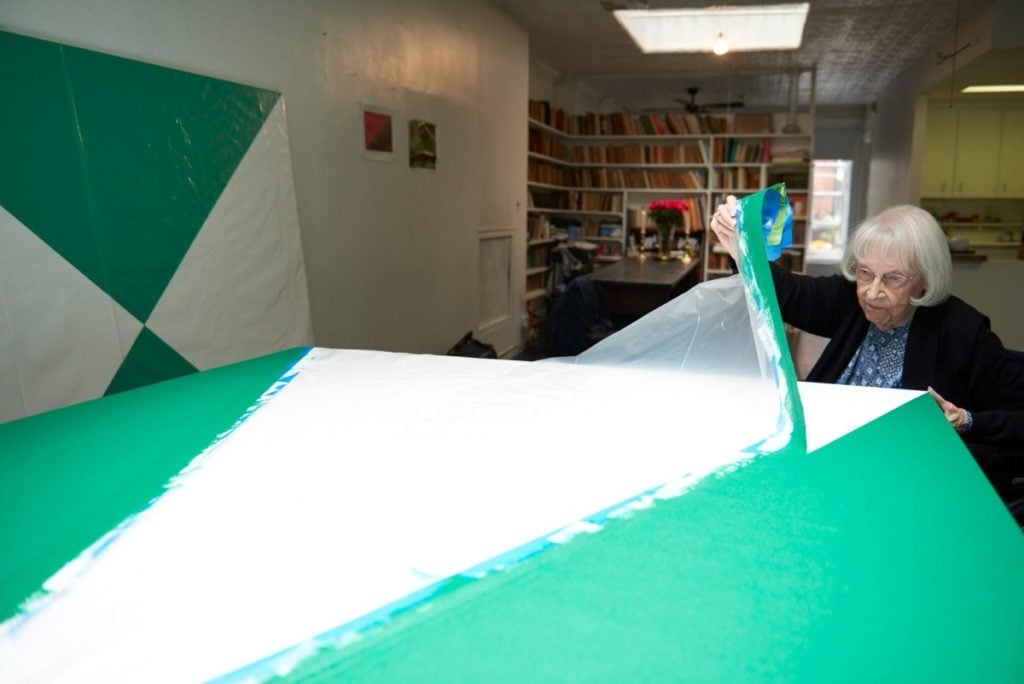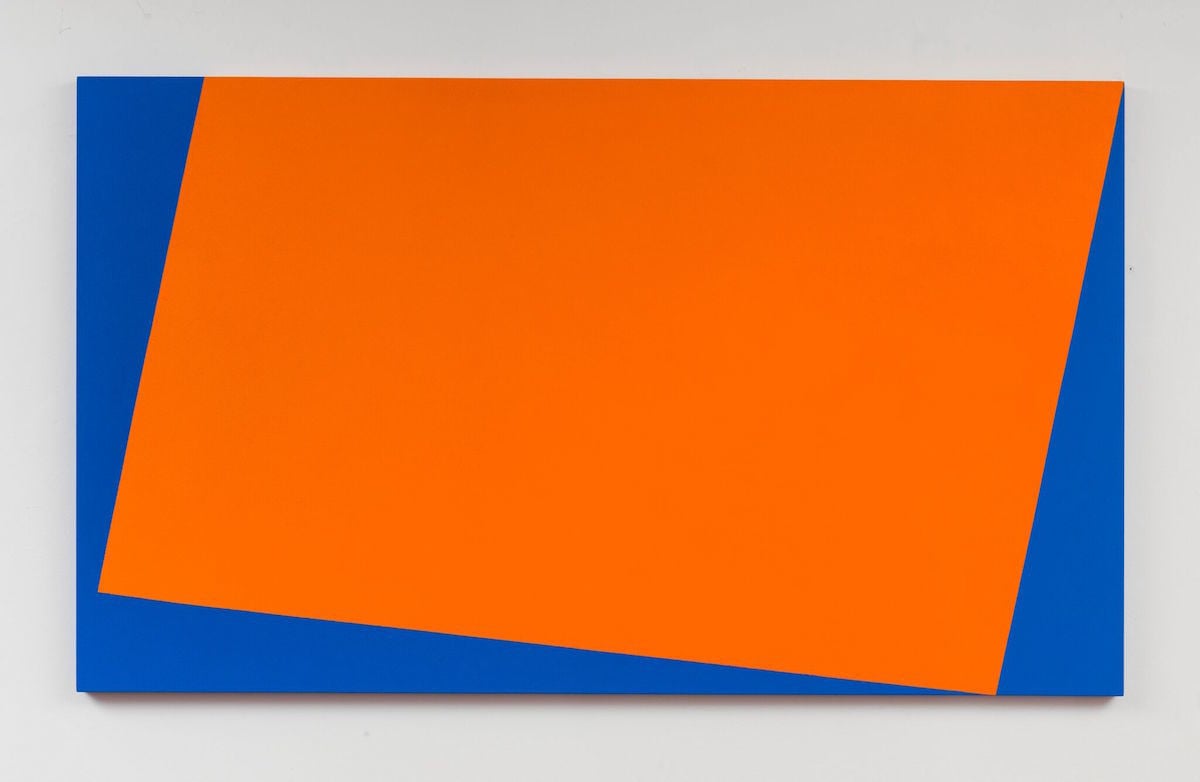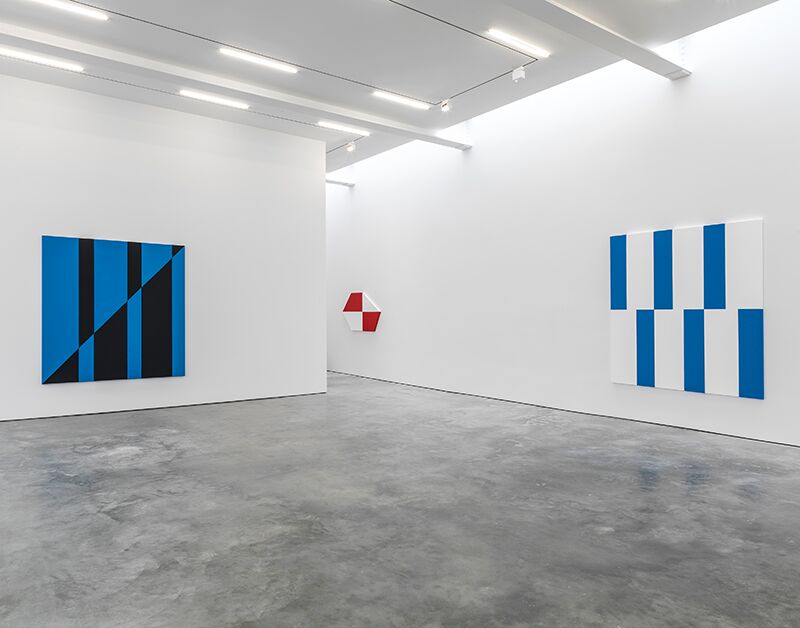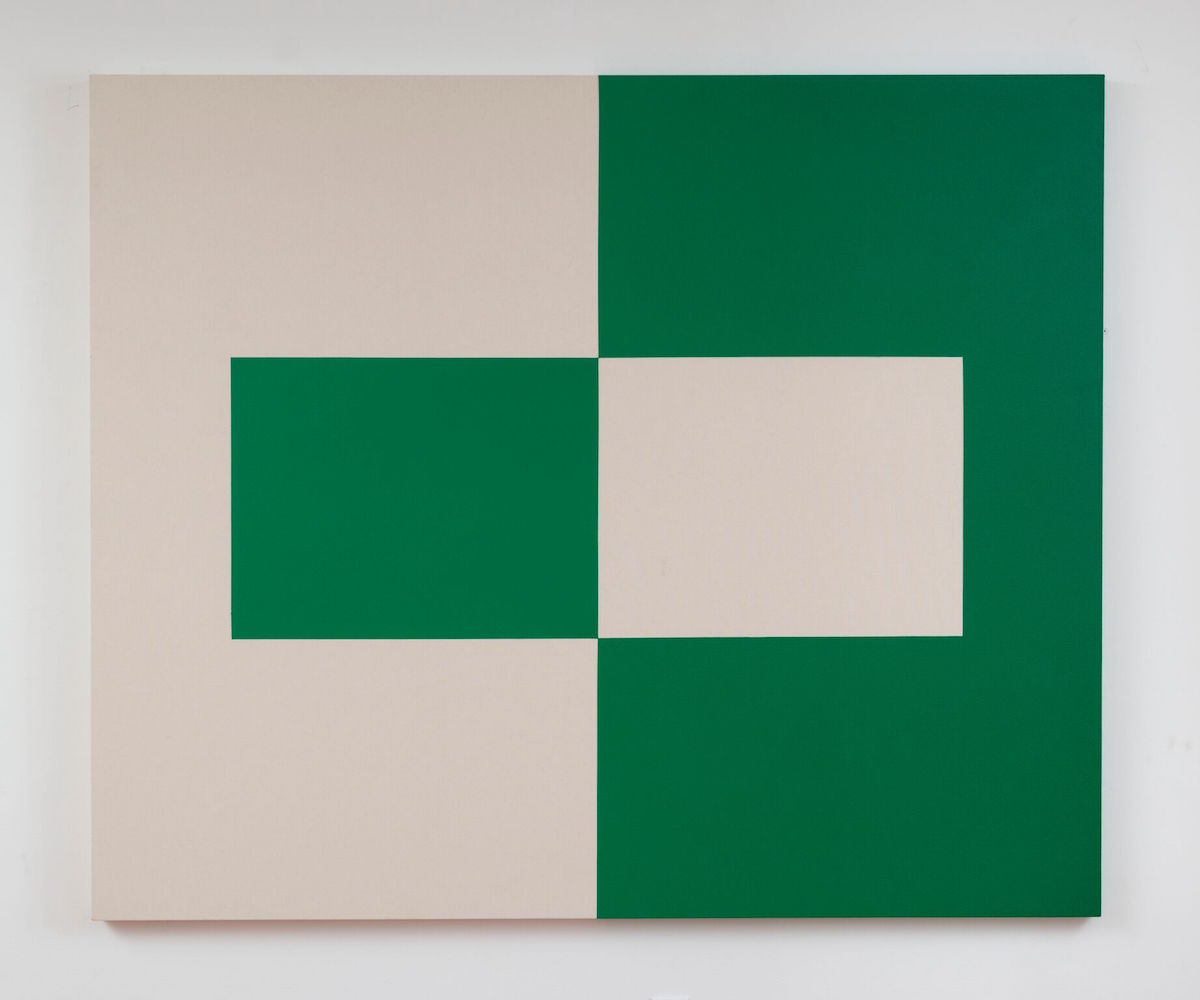Art & Exhibitions
At 101, Carmen Herrera Looks Back At Her Astonishing Career
It has been a big year for the centenarian artist.

It has been a big year for the centenarian artist.

Henri Neuendorf

The inimitable artist Carmen Herrera turned 101 last week. Born in Cuba in 1915, she pursued her craft for over 60 years with little recognition from the mainstream art establishment, persevering out of a deep love for painting before being “discovered” by the market as an octogenarian.
It was not until the age of 89 that she sold her first painting, and in her 90s prestigious museums such as MoMA, the Hirschhorn, and Tate Modern acquired her works, which are characterized by a hard-edge painting style applied in vivid colors.
Remarkably, she’s still going strong. In May, she inaugurated the Lisson Gallery’s New York space with an exhibition of new works. And in September, the Whitney Museum will present a survey of over 50 of her paintings spanning three decades.
She still works most days, although her process has understandably changed. Now, Herrera sketches out her designs in her studio and apartment in Chelsea before they are transferred to canvas with the help of an assistant.
artnet News spoke to Herrera about how the art world has changed, and how she celebrated her birthday this year.

Carmen Herrera Carmen Herrera Costa del Sol (2015). Photo © Carmen Herrera; Courtesy Lisson Gallery.
How did you celebrate your 101st birthday?
We had a party—a lunch for 20 or 30 friends at Craft, the restaurant next door. I had a cake that had the design of a recent painting of mine.
Why and when did you decide to be an artist?
As a child art was present in my home environment. The house was full of paintings and books and visiting artists and musicians and writers. Both my parents were journalists and very interested in the arts. My brothers were also interested in politics and always getting into trouble with this regime or that. It was for me a very natural process, that of becoming some kind of an artist. My first attempts as an artist were with watercolors and wood carvings. I remember how easy we could get mahogany and how beautiful it looked and felt.
What inspired you to paint in the abstract, hard-edge style for which you are known?
I was familiar with the work of [Oscar] Niemeyer and had seen magazines about the Bauhaus. All modern architecture was interesting to me. I loved spaces, shapes and lines. I was in Paris when I painted Iberia in 1948. That city was an amalgamation of the world’s artists in those days. The spirit and challenge of the new and the daring was stimulating. I always appreciated and liked [Lygia] Pape and Lygia [Clark] and later [Hélio] Oiticica and others I cannot today remember. But we all had similar sources in the Suprematists and the Dutch.

Carmen Herrera, installation shot at Lisson Gallery, New York. Photo by Adam Reich, courtesy Lisson Gallery, New York.
What drove you to continue working for so many years without selling?
I was liberated by being ignored. I was free to do as I wish. Frankly, it never bothered me that much.
Why do you think it took so long?
I do not know. Sometimes I have this theory, or that theory. It just was not my time, I guess.
What are some of the positive and negative changes you’ve observed in the art world since you started painting?
The world has changed, America has changed, New York has changed. It is then only natural that the institutions have also changed. I first knew the Whitney when it was on [West] 8th Street, then it changed and went uptown. Then it came back downtown and found that I was still there. And there I am, exhibiting there. And of course, I am honored to be included among such great art and artists.

Carmen Herrera Alba (2014). Photo © Carmen Herrera; Courtesy Lisson Gallery.
What advice would you give to young artists today?
Paciencia, querida, paciencia. (Patience, dear, patience.)
(This interview has been edited and condensed.)